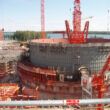Nuclear risk calculation and faith in human ingenuity
By Manpreet Sethi, June 9, 2016
Just as I sat down to write my final essay in this roundtable, news came in that an accident involving a bus and two cars on the Mumbai-Pune Expressway, a busy corridor between large Indian cities, had resulted in the death of 17 people. Since 2014, according to the June 6 edition of The Times of India, 285 deaths have been recorded on this road. And yet the expressway has not been closed.
In 2013, 1.6 million people in China and 1.4 million in India died of conditions caused by air pollution. The pollution that killed them is created by the burning of wood, dung, and crop residues for cooking and heating; by burning coal for electricity generation; and by vehicular exhaust. Air quality guidelines established by the World Health Organization prescribe daily mean particulate concentrations of no more than 25 micrograms per cubic meter. But in the month of February, Beijing and New Delhi typically experience particulate concentrations of 300 micrograms per cubic meter, or even more. Yet no one outlaws burning fuel for cooking and heating, or using vehicles for transportation.
I don't present these figures to trivialize the dangers of nuclear power generation—rather, to put things in perspective. Nuclear technology comes with a set of dangers. So does crossing a busy street in a modernizing city anywhere in Asia. People everywhere go about their daily routines—taking risks, taking precautions, staying prepared.
Where one sits. Why, my roundtable colleague Steven Starr asks, should "reactors … be allowed to continue producing mass quantities of nuclear poison" that, "in human terms," will last forever? Starr presents this as the correct question to ask about nuclear power. But for me, the correct question is why—when nuclear power can provide emission-free electricity generation—I should have to breathe poisonous emissions from dirty energy sources today.
This brings me to Sonja Schmid's point about people's differing risk perceptions. I believe that where one stands depends on where one sits. I come from a region where round-the-clock, every-day electricity is still a dream. So my risk calculations factor in hospitals that aren't assured of day-and-night electricity—where life support systems might not function properly and people might die as a result. I perceive this as a greater risk than nuclear accidents, which should not happen in the first place if nuclear systems are operated using optimal safety procedures.
I do agree with Starr that waste management is a major unresolved issue in nuclear power, but research and development into waste disposal continue in many parts of the world. Indeed, India announced an important step forward at the International Atomic Energy Agency's general conference in September 2014—namely, the commissioning of an actinide separation demonstration facility at the Bhabha Atomic Research Centre in Tarapur. The facility, according to Ratan Kumar Sinha, then–chairman of the Atomic Energy Commission, separates "minor actinides from … high-level waste," a process that might reduce the life of radioactive waste "from around 1,000 years to about 300 years." Separation also reduces the volume of high-level waste that requires long-term storage. Moreover, "technology has been developed and demonstrated for the removal of highly radioactive [cesium]-137 and its conversion to [a form] usable for blood irradiator[s] and similar low–dose rate radiation applications." I maintain faith in human ingenuity and its ability to identify solutions to problems that today may seem intractable.
In Round Two, I argued that nuclear establishments should partner with the public to build greater trust in nuclear power. To be sure, as Sonja Schmid has written, establishing trust does not provide nuclear establishments "carte blanche to make decisions on the public's behalf." I'll go further and say that partnerships between nuclear establishments and the public are a two-way street: When an aware, demanding public keeps the nuclear industry on its toes, nuclear safety and emergency preparedness improve.
Topics: Nuclear Energy
Share: [addthis tool="addthis_inline_share_toolbox"]














